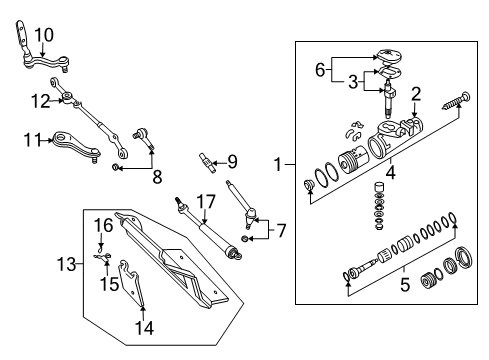Original OEM GM parts deliver superior quality and meet all performance standards needed for optimal automotive operation. The authentic part identified by 12471300 Outer Tie Rod is available in the market under the name GM Tie Rod, Tie Rod End. This genuine product has a full warranty coverage from the manufacturer available at all authorized GM dealers throughout the United States. This part 12471300 Outer Tie Rod fits certain Chevrolet S10, Blazer, S10 Blazer models, as well as GMC Sonoma, Typhoon, Syclone. Additionally, it is compatible with Oldsmobile Bravada models.
The original GM component designated by manufacturer part number 12471300 maintains top performance when functioning as the Rod Kit, Steering Linkage Outer Tie; Steering Tie Rod End; Outer Tie Rod End; Tie Rod End unit at its Outer. The component 12471300 is constructed from durable material and its dimensions span 4.8 x 2.4 x 10.7 inches while weighing 1.80 Pounds. The Direct Replacement component is ready in New condition to ensure full compatibility with your vehicle system. This component receives the designation of Rod Kit, Steering Tie Rod Outer. The part 12471300 has available replacement options 14067619, 26033089. GM manufacturer provides a warranty that ensures reliable operation of this product. The Shipping Policy and Return Policy pages outline complete details regarding shipping procedures and return processes.
If you want to save money in the long run on maintenance and repairs, you should choose OEM products because they're of the top level of durability. Are you on the quest of finding GM parts, our site is worth a visit. We stock an endless selection of high-quality GM components including things like ignition coils all the way through to fan shrouds and all at prices that can not be matched. You have nothing to worry about because all our OEM parts are covered with a manufacturer warranty, which guarantees superior quality and value.




